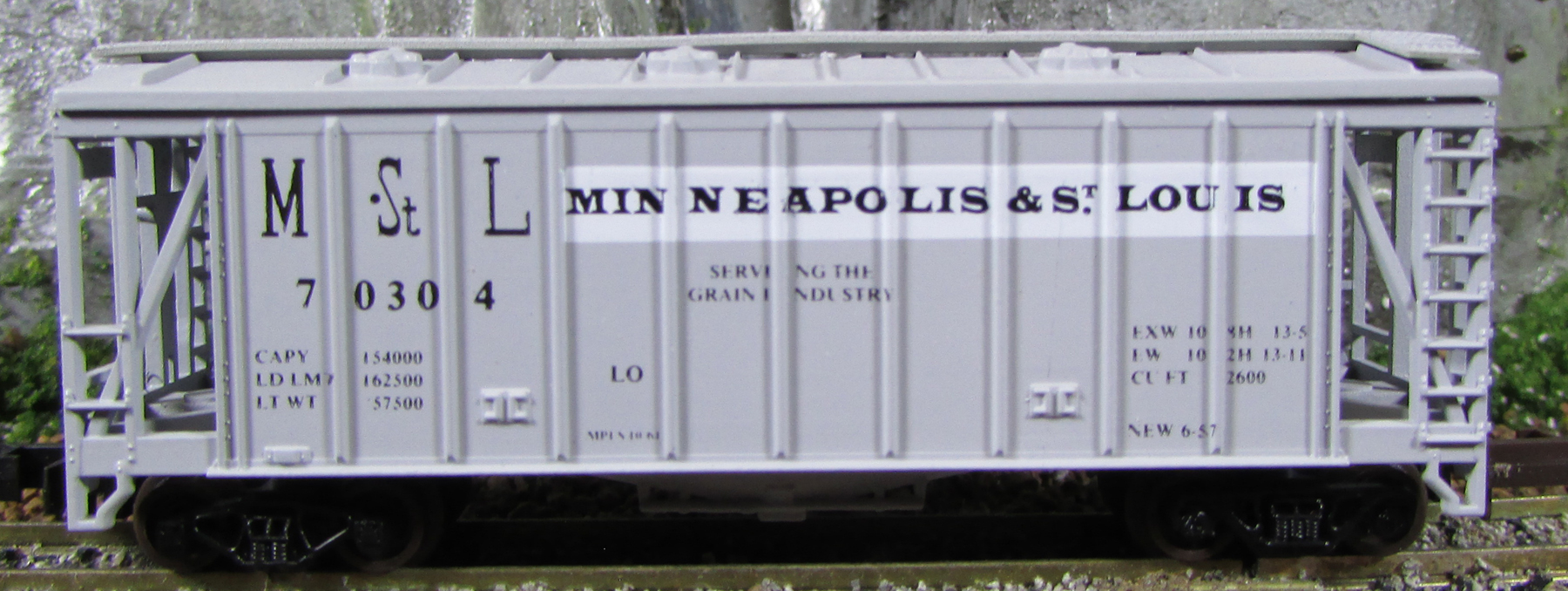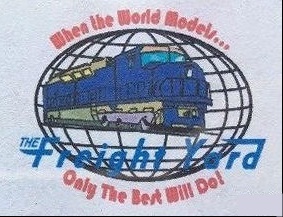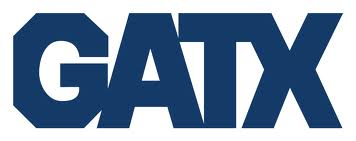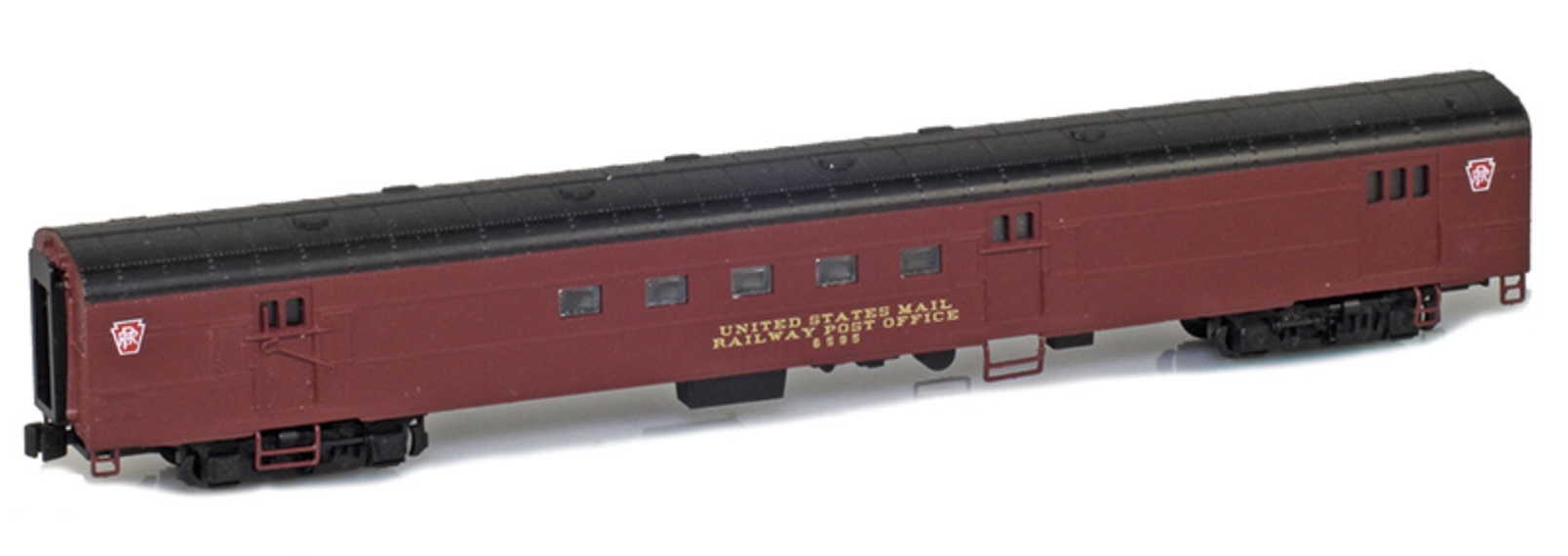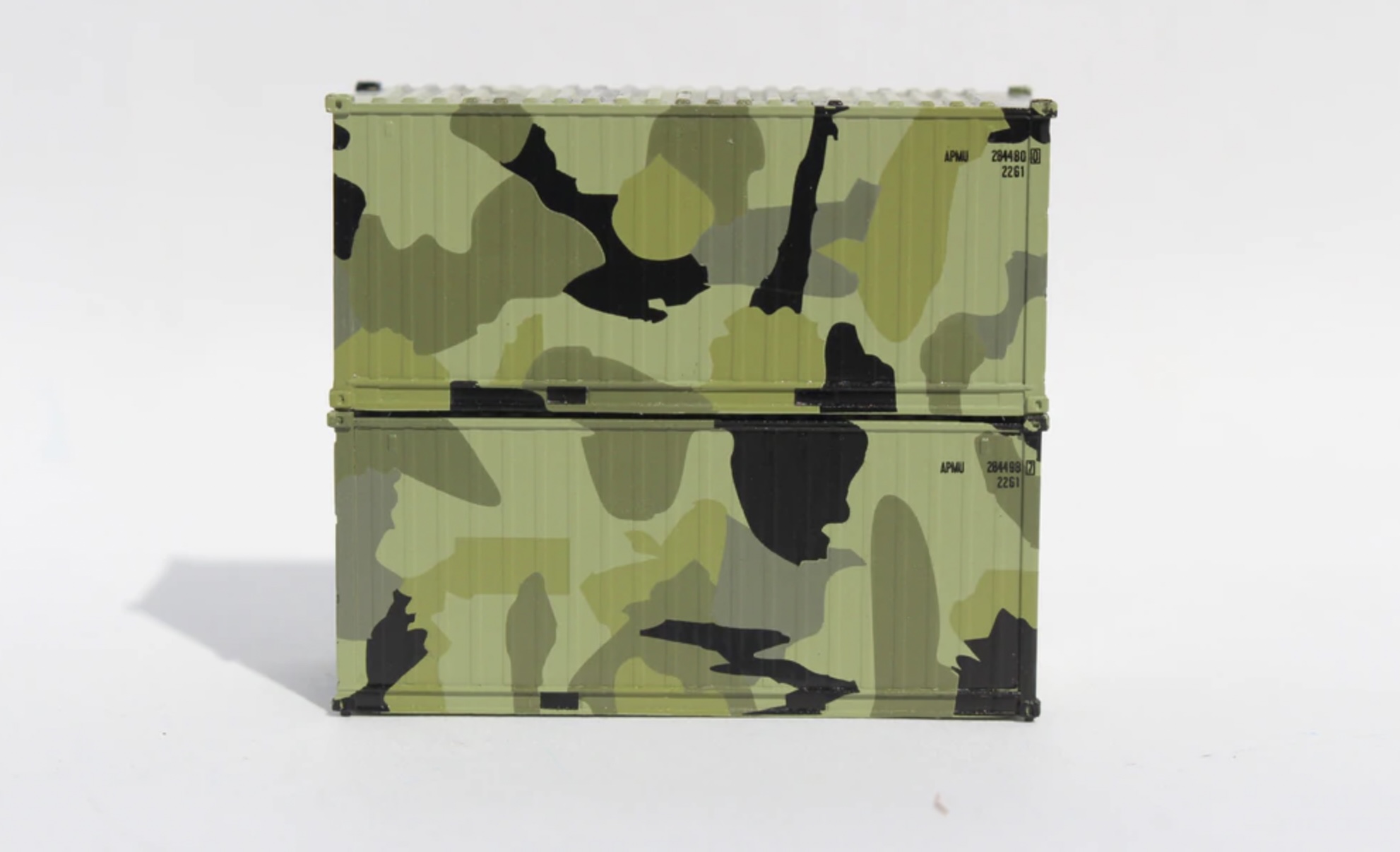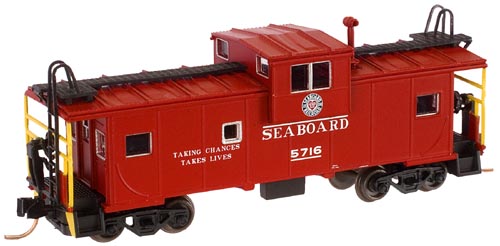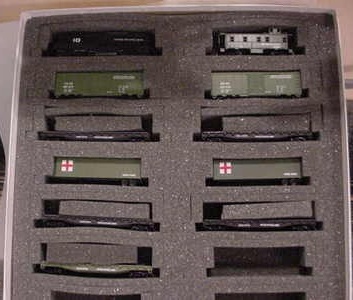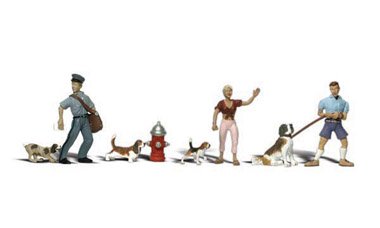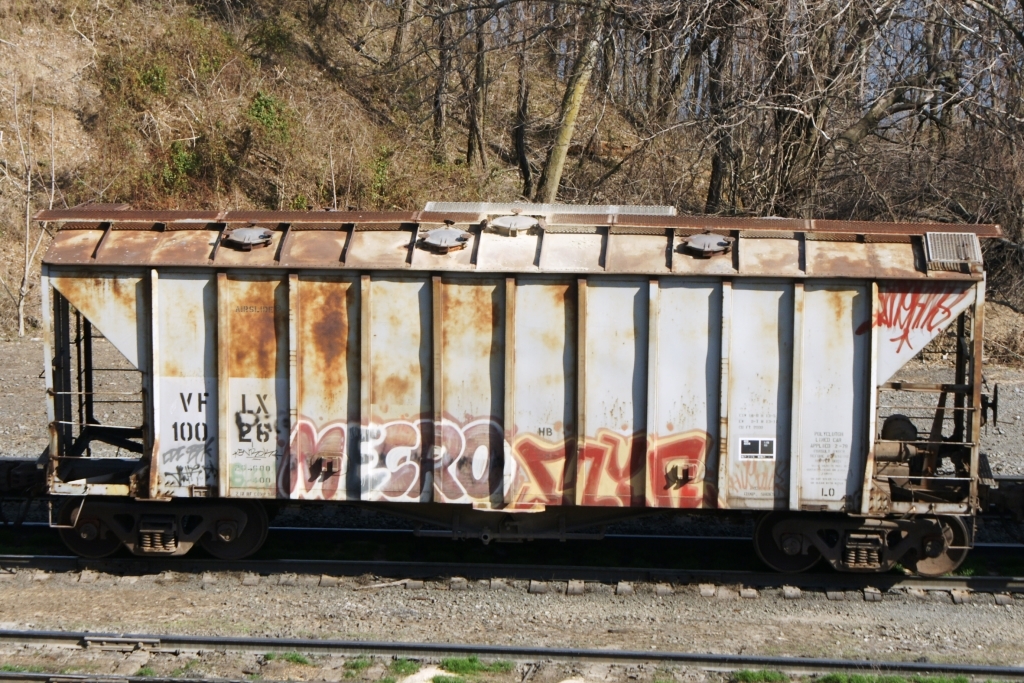Model Information: This body style first appears in the 1992 Atlas catalogs, marked as "Coming in early '92". The first release was produced in six road names plus and undecorated car. The early production was performed in Atlas' New Jersey facility, but when Atlas moved all their toolings to China in the late 1990s, this mold was moved.
Prototype History: The airslide covered hopper was introduced by General American Transportation Corporation (GATX) in 1953. Approx. 5000 of the 2600 cu. ft. cars were built between that year and 1969. The airslide is primarily designed for the bulk shipment of dry, granular or powdered commodities. The design of that car is such that it can be loaded and unloaded quickly and with little spillage through the use of air pressure. The most common commodities carried include: flour, sugar, starch, plastic pellets, cement, powdered chemicals and carbon black.
he Airslide was first patented in 1953, the same year Pullman Standard introduced their PS-2. What made the car unique was a set of fabric membranes in the hopper bays. Made of tightly woven cotton and treated with silicone, the Airslide® membranes were moisture-proof but allowed air to pass through. Compressed air was supplied at the unloading site and passed through the membrane up into the load. This aerated the load, allowing it to flow easily through the hoppers.
he Airslide was first patented in 1953, the same year Pullman Standard introduced their PS-2. What made the car unique was a set of fabric membranes in the hopper bays. Made of tightly woven cotton and treated with silicone, the Airslide® membranes were moisture-proof but allowed air to pass through. Compressed air was supplied at the unloading site and passed through the membrane up into the load. This aerated the load, allowing it to flow easily through the hoppers.
Road Name History: 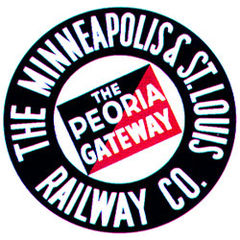 The M&St.L dates to 1853 and received the M&St.L name in 1870. They ran west from Peoria, Illinois to Oskaloosa, Iowa. There the mainline split. The more heavily trafficked line headed north through Marshalltown, Albert Lea and ended in Minneapolis. The other route from Oskaloosa headed northwest to Des Moines, then traced a big arc thought Spencer, Iowa; Winthrop, Minnesota and back to Minneapolis. A northeast to southwest diagonal line connected these to parallel routes. In addition to some shorter branches, there was a very long branch from Winthrop, Minnesota to Aberdeen, Leola, and Akaska, South Dakota. Although they had St. Louis in the name, and they were known as “The Louie” by locals, they never went anywhere near that city. Total mileage during the 50’s ran about 1,400. That’s just a bit smaller than Western Pacific.
The M&St.L dates to 1853 and received the M&St.L name in 1870. They ran west from Peoria, Illinois to Oskaloosa, Iowa. There the mainline split. The more heavily trafficked line headed north through Marshalltown, Albert Lea and ended in Minneapolis. The other route from Oskaloosa headed northwest to Des Moines, then traced a big arc thought Spencer, Iowa; Winthrop, Minnesota and back to Minneapolis. A northeast to southwest diagonal line connected these to parallel routes. In addition to some shorter branches, there was a very long branch from Winthrop, Minnesota to Aberdeen, Leola, and Akaska, South Dakota. Although they had St. Louis in the name, and they were known as “The Louie” by locals, they never went anywhere near that city. Total mileage during the 50’s ran about 1,400. That’s just a bit smaller than Western Pacific.
The M&St.L called itself “The Peoria Gateway.” Peoria, Illinois, like Chicago and St. Louis is a gateway between eastern railroads and western railroads. M&St.L was in a position to forward freight from Great Northern and Northern Pacific in Minneapolis to Peoria and its connections with Pennsylvania, Nickel Plate, Toledo Peoria & Western, and their favored connection, New York Central’s Peoria & Eastern subsidiary. Because Peoria was far less congested than Chicago, it often saved a day of transit time between Northwest and Eastern end points.
M&St.L also jointly marketed a route with Illinois Central for traffic between Chicago and Minneapolis under The Albert Lea Route name. It was surprisingly successful given that Burlington, Milwaukee Road, Chicago & North Western, and Soo Line all served the same corridor.
Passenger service was not their forte. Rock Island served the same major cities with nicer trains. That left M&St.L with a fleet of doodlebugs, often running with one to three trailers to serve local communities. An average passenger on the M&St.L traveled just 90 miles. In later years, Budd streamlined coaches served as trailers.
M&St.L operated in receivership from 1923 until 1942, longer than any other railroad at the time. Lucian Sprague, the receiver and later president dumped the oldest freight cars and bought new ones. By 1950, the steam fleet (the largest engines of which were light Mikes and light Pacifics) had been completely replaced with diesels.
M&St.L had more Alco RS-1’s than any other line (35) and painted them in NINE different paint schemes. SD7’s were painted in one of those schemes: black, cream, and gray. F units were painted in two versions of yellow and green with orange pinstripes. Switchers were black with modest striping. A new president in 1956 brought a new red and white paint scheme that was a nod to his alma mater, the University of Nebraska. Incidentally, that is the TENTH paint scheme for the RS-1’s. A bit later, they began painting freight cars in the same red with big jaunty M&St.L lettering that Lionel made nationally famous.
During this period, M&St.L tried to gain control of Toledo Peoria & Western and the Monon. Pennsylvania and Santa Fe joined forces to block the TP&W acquisition and that was that. The Chairman (Ben Heinman) left M&St.L to head the Chicago & North Western. In 1960, C&NW bought the railroad assets of the Minneapolis & St. Louis and merged the operations. The M&St.L corporation became an empty shell, which changed its name to MSL Industries and got into the hardware and finished steel businesses. MSTL reporting marks are still used today by Union Pacific to denote certain leased car fleets.

The M&St.L called itself “The Peoria Gateway.” Peoria, Illinois, like Chicago and St. Louis is a gateway between eastern railroads and western railroads. M&St.L was in a position to forward freight from Great Northern and Northern Pacific in Minneapolis to Peoria and its connections with Pennsylvania, Nickel Plate, Toledo Peoria & Western, and their favored connection, New York Central’s Peoria & Eastern subsidiary. Because Peoria was far less congested than Chicago, it often saved a day of transit time between Northwest and Eastern end points.
M&St.L also jointly marketed a route with Illinois Central for traffic between Chicago and Minneapolis under The Albert Lea Route name. It was surprisingly successful given that Burlington, Milwaukee Road, Chicago & North Western, and Soo Line all served the same corridor.
Passenger service was not their forte. Rock Island served the same major cities with nicer trains. That left M&St.L with a fleet of doodlebugs, often running with one to three trailers to serve local communities. An average passenger on the M&St.L traveled just 90 miles. In later years, Budd streamlined coaches served as trailers.
M&St.L operated in receivership from 1923 until 1942, longer than any other railroad at the time. Lucian Sprague, the receiver and later president dumped the oldest freight cars and bought new ones. By 1950, the steam fleet (the largest engines of which were light Mikes and light Pacifics) had been completely replaced with diesels.
M&St.L had more Alco RS-1’s than any other line (35) and painted them in NINE different paint schemes. SD7’s were painted in one of those schemes: black, cream, and gray. F units were painted in two versions of yellow and green with orange pinstripes. Switchers were black with modest striping. A new president in 1956 brought a new red and white paint scheme that was a nod to his alma mater, the University of Nebraska. Incidentally, that is the TENTH paint scheme for the RS-1’s. A bit later, they began painting freight cars in the same red with big jaunty M&St.L lettering that Lionel made nationally famous.
During this period, M&St.L tried to gain control of Toledo Peoria & Western and the Monon. Pennsylvania and Santa Fe joined forces to block the TP&W acquisition and that was that. The Chairman (Ben Heinman) left M&St.L to head the Chicago & North Western. In 1960, C&NW bought the railroad assets of the Minneapolis & St. Louis and merged the operations. The M&St.L corporation became an empty shell, which changed its name to MSL Industries and got into the hardware and finished steel businesses. MSTL reporting marks are still used today by Union Pacific to denote certain leased car fleets.
Brand/Importer Information: The Freight Yard was a hobby shop that did custom decoration and special runs of other manufacturers' N Scale products. It sold its custom products under several brands or collections: Premiere Editions, by The Freight Yard and Dreams Design.
It was located in Anaheim, California and then moved to 2006 in Phoenix, Arizona.
Established in the late 1980s, it stopped business under this name by the end of the 2000s.
The Freight Yard was owned and operated by Darren J. Cohen. Darren is now operating North Valley Trains.
The Freight Yard / Premiere Editions runs are usually available in series of two to twelve different numbers (suffixed A to M, with I not used).
The first two digits of the stock number correspond to the release year (9x being 199x, and 2x being 200x).
It was located in Anaheim, California and then moved to 2006 in Phoenix, Arizona.
Established in the late 1980s, it stopped business under this name by the end of the 2000s.
The Freight Yard was owned and operated by Darren J. Cohen. Darren is now operating North Valley Trains.
The Freight Yard / Premiere Editions runs are usually available in series of two to twelve different numbers (suffixed A to M, with I not used).
The first two digits of the stock number correspond to the release year (9x being 199x, and 2x being 200x).
Item created by: gdm on 2017-01-06 12:55:51. Last edited by gdm on 2023-11-26 09:48:48
If you see errors or missing data in this entry, please feel free to log in and edit it. Anyone with a Gmail account can log in instantly.
If you see errors or missing data in this entry, please feel free to log in and edit it. Anyone with a Gmail account can log in instantly.


